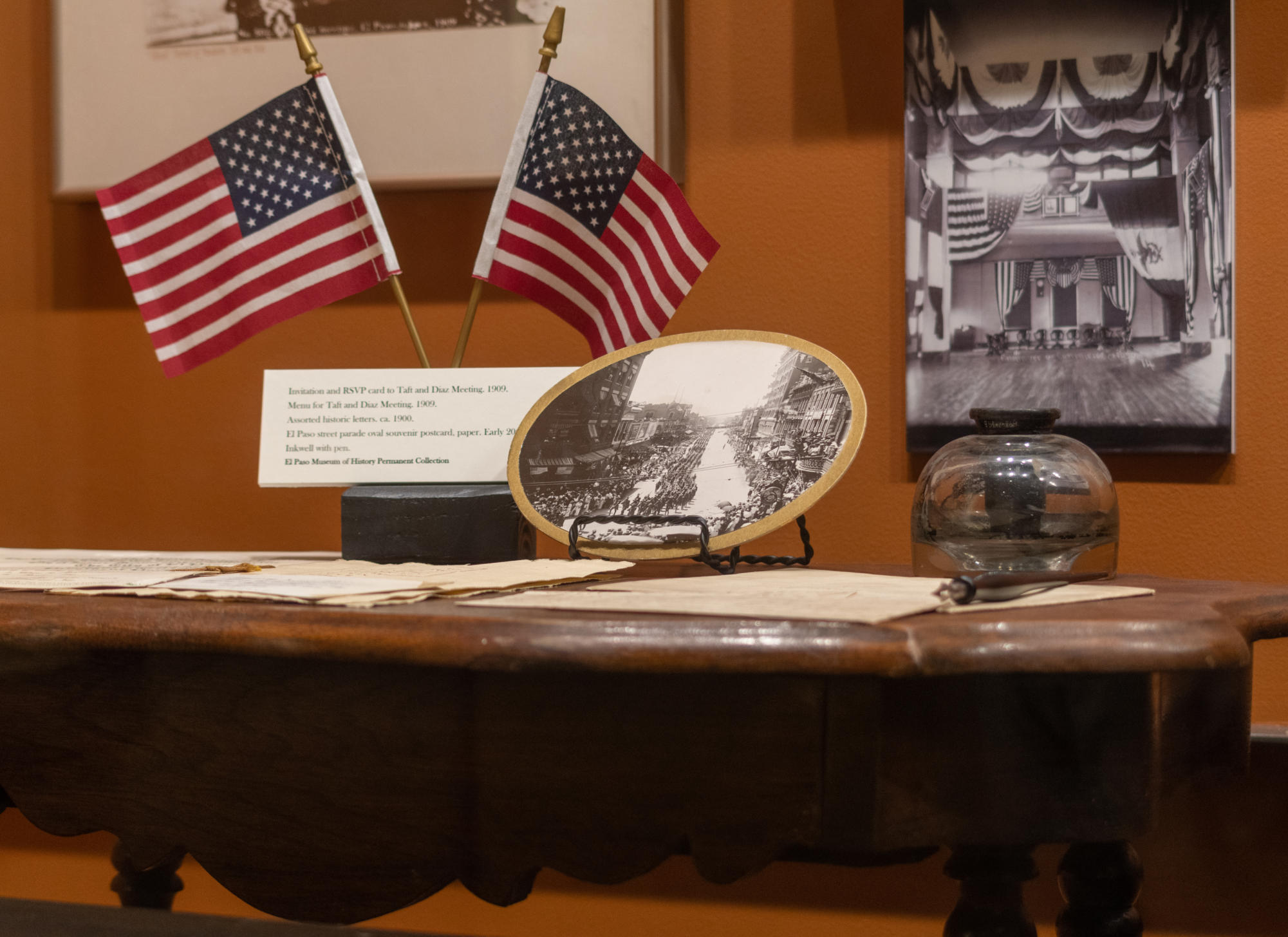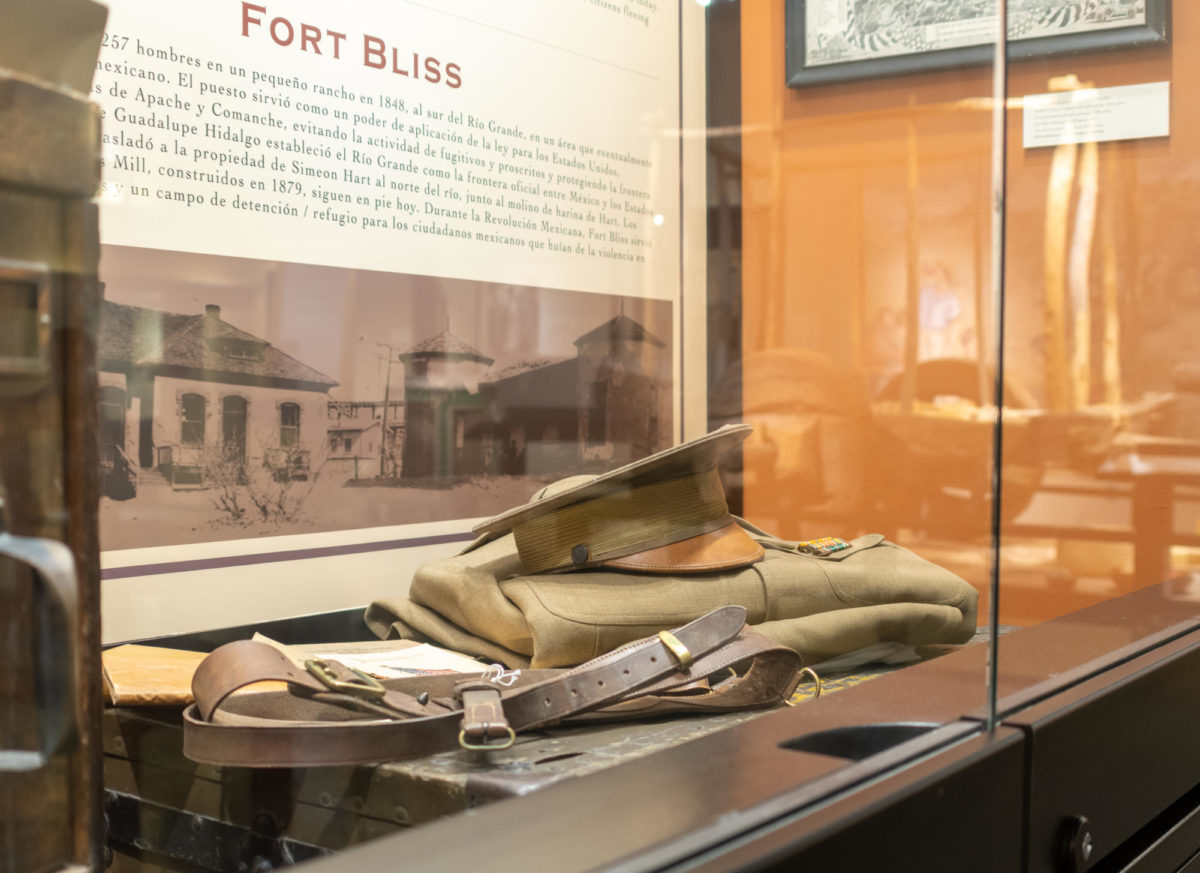From less than 9,000 residents in Fort Bliss a decade ago to over 11,000 today, per the 2020 census, Fort Bliss remains a pillar of the El Paso community by providing countless services and benefits for those located across the borderland.
1849-1851. The first post ever to settle in El Paso would fall under the direction of Colonel Alexander Doniphan in 1849, after the success of military operations Battle of El Brazito and the Battle of the Sacramento River during the Mexican-American War. The Post Opposite of El Paso del Norte was created on Coon’s Ranch, which is often misremembered as Smith’s Ranch, in today’s downtown El Paso.
The post worked closely with several smaller posts spread out along the newly defined U.S.- U.S.-Mexico border. The posts were ordered to fend off any Native American attacks along with protecting U.S. sovereignty. Personnel struggled to combat Native American raids forcing the garrisons to constantly shift. This inability to establish a dominant Army post led the U.S. government to close the posts in 1851.
1854-1876. The U.S. government attempted to reopen a military post in El Paso again in 1854 sending four companies to the borderland in January 1854. The post would aptly be named Post of El Paso at Magoffinsville as it was placed in a small village named after merchant James Wiley Magoffin. The orders to reform a military outpost came from the Secretary of War and soon-to-be President of the Confederacy, Jefferson Jackson. The post would formerly become a U.S. fort a few months after Mexican-American War veteran Lt. Col. William Wallace Smith Bliss in March 1854.
Fort Bliss would continue to serve the same purpose as the previous Post Opposite of Paso del Norte until the start of the Civil War. Fort Bliss would be forced to surrender to the Confederacy in March 1861. Those who remained loyal to the Union forces would become prisoners of war until 1863. The Confederacy would use Fort Bliss as an offensive point of attack on Union garrisons in New Mexico and Arizona up until 1862 as the Confederacy ran out of supplies.
Following the war, a massive flood forced the Army out of Magoffinsville into the short-lived Camp Concordia. This post would be placed on a plot of land south of present-day Interstate 10. Bad hygiene, lack of supplies, and financial trouble forced the U.S. to close Fort Bliss.
1877-1878. El Paso Salt War pitted El Pasoans and Mexicans against the San Elizario Salt Co. after the Texas State Legislature granted a full monopoly of local salt deposits to San Elizario. This created an outrage among natives who had openly used the deposits for generations. These natives, along with several small-scale salt producers, formed the Salt Ring, a group dedicated to competing with San Elizario. The Salt Ring would slowly encroach on San Elizario’s hold on the salt deposits to the point that violence broke out. The local Salt Ring gained control of the land after several people were murdered, and the Texas Rangers were forced to interject. The Rangers would soon surrender prompting soldiers from nearby U.S. military posts to seize control over the city. The Texas State Legislature would be forced to overturn its decision.
1878-1891. The Salt War would cost the U.S. under a million dollars adjusted for inflation while also changing the national narrative about the borderland. As a result, the U.S. once again commissioned a permanent military base on Hart’s Mill located just minutes away from UTEP, Jan. 1, 1878. Fort Bliss struggled to maintain supplies until the first railroad came to the borderland in 1881. Despite the strategic placing at Hart’s Mill, Congress appropriated $150,000 for a brand-new military installation just five miles outside El Paso City’s limits.
1893-1910. Fort Bliss would find a role in the Mexican Revolution as General of the Armies, John J. Pershing, would lead several expeditions to capture Mexican revolutionary Pancho Villa, while also keeping the fight in Mexico. The most notorious of these efforts was the failed Punitive Expedition which was a direct response to the attack by Villa on nearby Columbus, New Mexico in 1916. In the meantime, Fort Bliss began to garner national attention as the post’s airfield would become home to the United States Army Border Air Patrol and later the country’s first-ever tactical unit to be equipped with airplanes.
1910-1946. Fort Bliss continued to grow into World War I during which Pershing would amass over two million troops. The growth during and after World War I would pale in comparison to the fort’s role in World War II. The Anti-Aircraft Artillery School, originally based in Camp David, was restationed at Fort Bliss in 1944 streamlining training in an effort keep up with the war’s demand for troops.
Fort Bliss would also intern 91 German, Italian and Japanese Americans from Hawaii which was a result of Executive Order 9066 signed by U.S. President Franklin Delano Roosevelt. E.O. 9066 would force U.S. citizens and tourists with roots in axis- controlled nations into internment camps without a trial or hearing.
Controversy would continue to plague Fort Bliss after the war thanks in part to Operation Paperclip. Operation Paperclip would grant a select number of former Nazi scientists the opportunity to work for the U.S. Military with Fort Bliss housing 100 Nazi scientists in 1946.
1950-2001. Fort Bliss would continue to train soldiers amid the Cold War while becoming a preferred area for live fire exercises with missiles. Fort Bliss would see upgrades in 1954 and 1958 after the U.S. Army Air Defense School was placed at Fort Bliss. Meanwhile, the fort would be used largely for training and testing of anti-aircraft equipment. Throughout the late 1900s, Fort Bliss maintained much of its status up until 1995 when the Department of Defense suggested that the U.S. 3rd Armored Cavalry Regiment be moved from Fort Carson.
After the Sept. 11, 2001 Attacks, Fort Bliss would provide the U.S. and NATO with Air Defense Artillery Battalions for combat in Afghanistan and Iraq. Fort Bliss also trained Afghan security forces in hopes that these U.S. trained soldiers would be able to protect Afghani sovereignty.
Present Day. Today, Fort Bliss has become the area’s largest provider of jobs with an estimated 167,358 people working on base. While many people who do not live in El Paso are not keen on the beauties of the city, El Paso has the bragging rights of being home to the largest military installation in the U.S. with the 11th Air Defense Artillery Brigade, the 32nd Army Air and Missile Defense Command, and the 1st Armored Division are all based at Fort Bliss.
FORT BLISS
Traducido por Yoali Rodriguez
1849-1851. El primer grupo que se estableció en El Paso fue bajo las órdenes del Coronel Alexander Doniphan en el año 1849, después del éxito operativo que obtuvo el equipo militar durante la Batalla de El Brazito y la Batalla de El Río de Sacramento durante la guerra de Estados Unidos-México.
1854-1876. Después de tratar de abrir otra instalación militar en 1854, el Gobierno de Estados Unidos mandó cuatro compañías a la frontera en enero de ese mismo año. Resultando en el establecimiento del puesto militar llamado “El puesto de El Paso”, en Magoffinsville (una aldea que obtuvo el nombre del minorista James Wiley Magoffin). Convirtiéndose oficialmente en una base militar en marzo de 1854, consiguiendo su nombre en dedicación al veterano Teniente Coronel William Wallace Smith, quien tuvo gran participacion en la guerra de Estados Unidos-México.
1877-1878. La Guerra de la Sal, también conocida como la Revolución de Salinero, puso a ciudadanos de El Paso y nativos mexicanos contra la compañía de sal en San Elizario, Tejas, después de que la legislatura del estado aprobara un monopolio de depósitos de sales en San Elizario. Creando problemas con la gente nativa que utilizaba estos depósitos de sal desde hace décadas. Resultando en una Revolución entre la banda local de la Sal y los guardias del estado, después de que esta banda obtuviera poder de las tierras de varias personas que fueron asesinadas; causando que los guardias se rindieran y acudieran a la fuerza militar para traer control a la ciudad, provocando que la legislatura cambiara su decisión.
1893-1910. Fort Bliss encontró su lugar durante la Revolución Mexicana, gracias al General John J. Pershing quien ordenó varias búsquedas para capturar al revolucionario mexicano Pancho Villa, mientras mantenían
su ballata con el país Mexicano. Después del ataque hecho por Villa cerca de Columbus, Nuevo México en 1916, Fort Bliss comenzó a ejercer atención nacional por el lanzamiento del Ejército Border Air Patrol de Estados Unidos.1910-1946. La base de Fort Bliss siguió creciendo durante la Primera Guerra Mundial, con más de dos millones de tropas. La Anti- Aircraft Artillery School, que originalmente estaba ubicada en Camp David, fue reinstalada en 1944 en Fort Bliss.
Fort Bliss también internó un total de 91 alemanes, italianos, y japoneses-americanos de Hawaii como resultado de la Orden Ejecutiva 9066, que fue firmada por el presidente de Estados Unidos Franklin Delano Rooselvelt. Forzando a ciudadanos del país y a turistas de naciones controladas a campos intermitentes sin ningún tipo de juicio.
Esta decisión siguió plagando Fort Bliss después de la guerra a favor de la Operación Paperclip, que le dio a un número de ex- científicos nazis la oportunidad para trabajar con el ejército americano. Dando hogar a 100 científicos en 1946.
1950-2001. Fort Bliss continuó entrenando soldados durante la Guerra Fría, mientras preparaban el área para comenzar el lanzamiento de misiles. Durante los años de 1954 y 1958, Fort Bliss utilizó este tiempo para hacer entrenamientos con equipos antiáereos.
Después de los ataques del 11 de septiembre, Fort Bliss le dio servicios al país y a NATO con protección de batallón de artillería áerea para combatir Afghanistan e Iraq.
Presente. Hoy en día, Fort Bliss base se ha convertido en una de las bases que más produce empleos, estimando un total de 167,358 personas trabajando dentro de la base en una gran variedad de puestos. Mientras aquellos que no viven en El Paso no saben la belleza de la ciudad, El Paso puede presumir que es el hogar de la onceava brigada del Air Defense Artillery y del Missile Defense Command, y la primera división armada de Fort Bliss.









